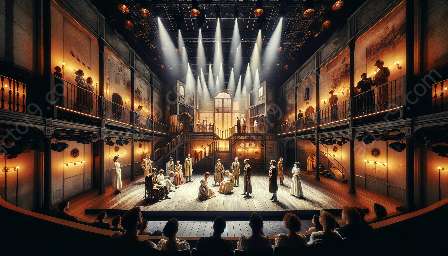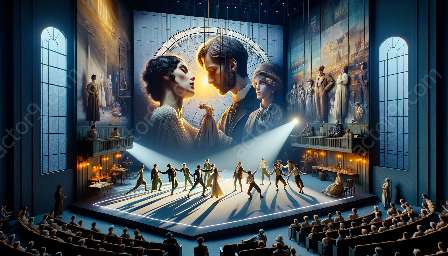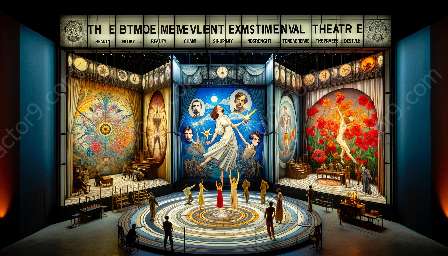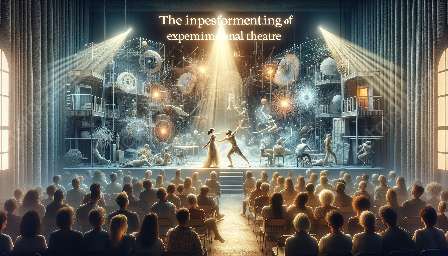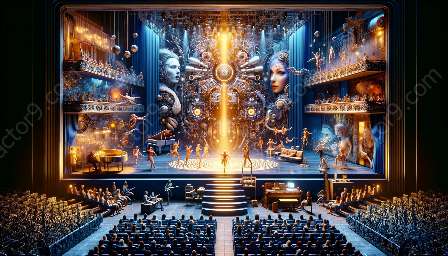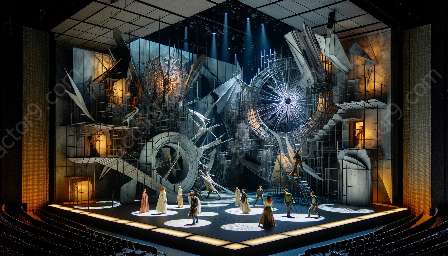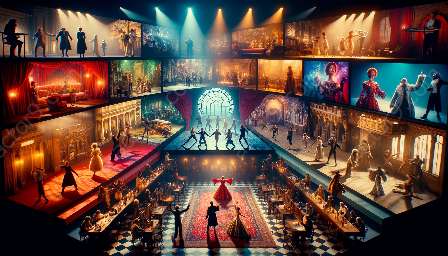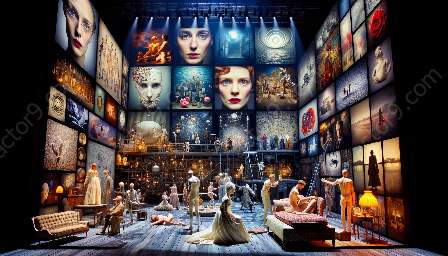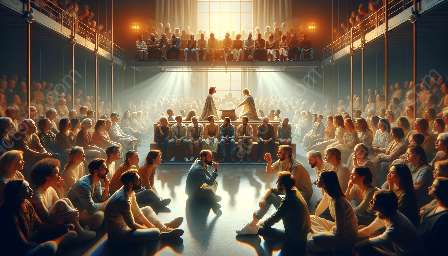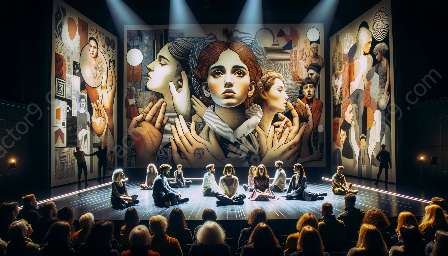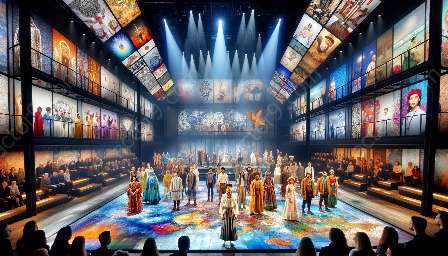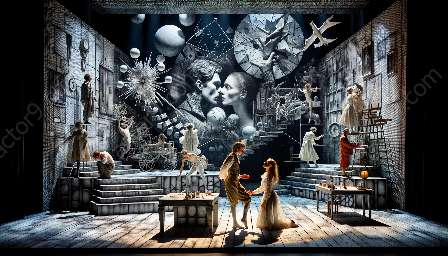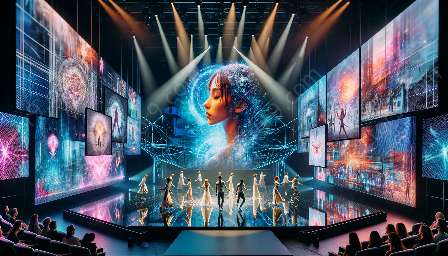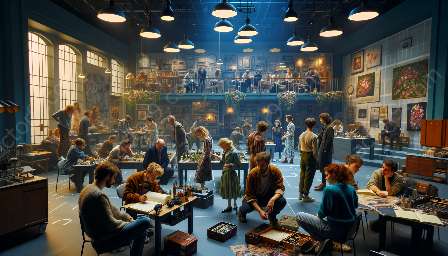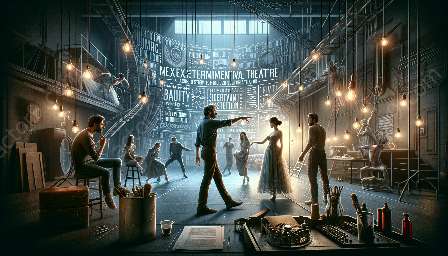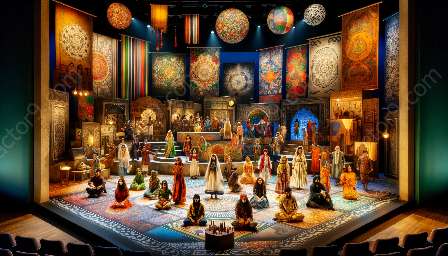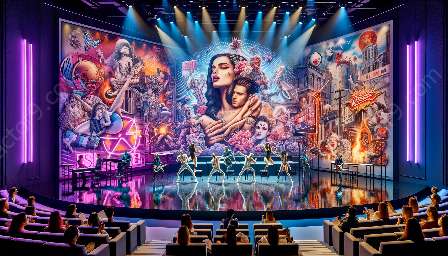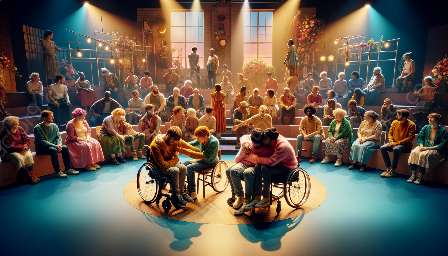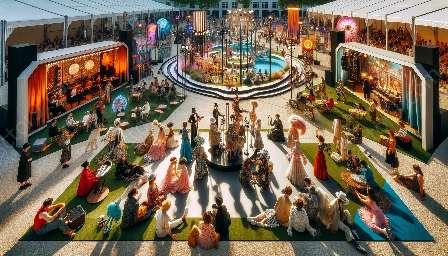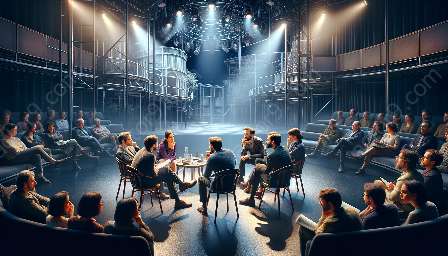Experimental theatre is a captivating realm within the performing arts, known for its unconventional approach to storytelling and performance. This topic cluster delves into the intricate process of production and stage design in experimental theatre, reflecting the convergence of art and technology to create thought-provoking and immersive experiences for audiences.
The Essence of Experimental Theatre
Experimental theatre transcends traditional boundaries and explores new territories of creativity. It is characterized by the innovative use of narrative structures, stagecraft, and unconventional performance techniques. In this context, production and stage design play crucial roles in realizing the vision of the playwright and director, transforming abstract concepts into tangible experiences for the audience.
Collaborative Creation Process
At the heart of experimental theatre production is a collaborative creation process that involves multiple stakeholders, including directors, playwrights, set designers, lighting designers, and sound engineers. This collaborative dynamic fosters an environment where diverse artistic perspectives converge to bring a singular vision to life. The synthesis of various art forms and technical elements contributes to the multidimensionality of experimental theatre performances, creating an immersive and dynamic theatrical experience.
Integration of Art and Technology
One of the defining features of experimental theatre is the seamless integration of art and technology. Production and stage design in this context often involve the use of cutting-edge multimedia elements, interactive installations, augmented reality, and innovative lighting techniques. These technological interventions serve as catalysts for expanding the expressive potential of the stage, enabling the creation of visually stunning and conceptually rich environments that support the narrative and thematic elements of the performance.
Adapting to Unconventional Spaces
Experimental theatre frequently blurs the boundaries between performance spaces and unconventional venues. Productions may take place in abandoned warehouses, open fields, or site-specific locations, challenging traditional notions of stage design and audience interaction. As a result, the production and stage design processes in experimental theatre demand adaptability and a willingness to reimagine spatial dynamics, transforming non-traditional venues into evocative and immersive theatrical settings.
Emphasis on Audience Engagement
Experimental theatre often places a strong emphasis on audience engagement and participation. Production and stage design are crafted to create intimate and interactive environments, enabling audiences to become active participants in the unfolding narrative. Such immersive experiences may involve non-linear storytelling, spatialized soundscapes, or interactive installations that invite audience members to engage with the performance in unconventional ways, blurring the line between spectator and performer.
Conclusion
Production and stage design in experimental theatre exemplify the dynamic fusion of artistic innovation and technological exploration within the realm of performing arts. By embracing unconventional approaches to storytelling, spatial dynamics, and audience interaction, experimental theatre continues to push the boundaries of traditional theatre, inspiring a new era of multidisciplinary creativity and immersive experiences.
Topic
Enhancing Audience Experience with Sound Design
View details
Impact of Costume Design in Experimental Theatre
View details
Differences in Stage Management for Experimental Theatre
View details
Addressing Social and Political Issues through Design
View details
Incorporating Multimedia Elements in Stage Design
View details
Collaborative Art-making in Experimental Theatre
View details
Psychological and Emotional Effects on Audiences
View details
Engaging with New Technologies and Digital Media
View details
Psychology and Perception in Audience Experience
View details
Contribution to Audience Empathy and Understanding
View details
Productions in Virtual or Augmented Reality Environment
View details
Influences of Ritual and Ceremony in Productions
View details
Non-Traditional Materials and Construction Techniques
View details
Questions
What are the key principles of experimental theatre production and stage design?
View details
How can technology be integrated into experimental theatre production and stage design?
View details
What role does lighting play in experimental theatre stage design?
View details
What are some innovative set design techniques for experimental theatre?
View details
How can sound design enhance the audience experience in experimental theatre?
View details
What are the challenges of designing and producing experimental theatre in non-traditional spaces?
View details
How does costume design contribute to the overall aesthetic of experimental theatre?
View details
What are the considerations for creating immersive experiences in experimental theatre?
View details
How does stage management differ in experimental theatre productions?
View details
What are the ethical considerations in experimental theatre production and stage design?
View details
How does audience interaction influence the design of experimental theatre productions?
View details
What are the key elements of site-specific theatre production and stage design?
View details
What role does visual arts play in experimental theatre design and production?
View details
How can sustainable practices be integrated into experimental theatre production and stage design?
View details
What are the influences of cultural diversity on experimental theatre design and production?
View details
How does architecture influence the design of experimental theatre spaces?
View details
What are the trends in experimental theatre production and stage design?
View details
How can experimental theatre productions address social and political issues through design?
View details
What role does improvisation play in the creation of experimental theatre productions?
View details
What are the considerations for incorporating multimedia elements into experimental theatre stage design?
View details
How does collaborative art-making impact experimental theatre design and production?
View details
What are the psychological and emotional effects of experimental theatre design and production on the audience?
View details
How can experimental theatre productions engage with new technologies and digital media?
View details
What are the influences of avant-garde movements on experimental theatre production and stage design?
View details
How does audience psychology inform the design and production of experimental theatre?
View details
What are the influences of psychology and perception on audience experience in experimental theatre?
View details
How does historical context influence the design and production of experimental theatre?
View details
What are the considerations for creating inclusive and accessible experimental theatre productions?
View details
How can experimental theatre design and production contribute to audience empathy and understanding?
View details
What are the considerations for creating experimental theatre productions in a virtual or augmented reality environment?
View details
How does the use of symbolism and metaphor enhance experimental theatre design and production?
View details
What are the influences of ritual and ceremony on experimental theatre productions?
View details
How does the use of non-traditional materials and construction techniques impact experimental theatre production and stage design?
View details

